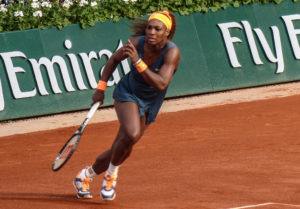No more boys club: Women in sports fighting for equality
For decades women have been fighting at the forefront of equal rights and pay in the workplace. In particular, women in sports are systematically earning less in their career fields on and off the playing field or court than their male counterparts.
According BBC wage gap between men and women statistics, the gender pay gap is still around a 20 percent margin. And for every dollar that a man earns working full-time, a woman makes $0.76, having to face more difficulties in the workplace. When race and ethnicity are added, women of color earn even less.
The Equal Rights Amendment passed in 1972 established gender equality among men and women in the United States. However, the law still leaves women subjected to other inequitable treatments. These unfair treatments have caused women to participate in marches and rallies all over the United States and in various other countries.
The main issues within women’s sports stem from representation, judgment, advertisement (the amount of viewership) and earnings. However, millennial women are making a change to the gender pay gap closing in on men.
At the center of this controversy within the gender pay gap, female athletes battle with equality in the male dominated sports industry. Women’s sports are simply not accounted for on various platforms especially in media. In men’s sports, the Super Bowl, NBA Finals, March Madness and several other championship games air primetime on a regular base. The amount of advertisement and marketing behind these big orchestrated events simply do not match the efforts of advertising behind women’s games. According to BBC, experts say “To achieve equality, it is not enough that the governing bodies of each sport establish gender-blind prizes – sponsorship and endorsements, as well as contractual conditions, have become some of the main forces perpetuating the imbalance.” These games are all highly anticipated and promoted more than any women’s sporting events.
Rarely are women games broadcasted during primetime unless it’s female sports sensations such as Serena Williams, Lindsey Vonn and Danica Patrick. Women who are all well accomplished in their fields but are mostly recognized for their personal lives, sexualization or outspokenness for equality. The sporting industry barely includes women, especially if they’re not at the peak of their careers’ or popularized into being liked by sexualization. Female athletes are subjected to being sex symbols in order to get the attention they deserve. For other women sexuality is consistently questioned, especially if they play a more masculine sport or have a muscular body.
All year round, men’s sports are continuously broadcasted, even during they’re off season. Basketball and football training camps and other events are aired on primetime or sporting networks endlessly. Reruns of men’s sports are most likely to air than any women’s game. The WNBA and USNWST are barely recognized for their work on and off the court and field. Female athletes and coaches of both programs consistently speak on gender equality and pay. As regular and championship games are barely advertised, it leads to a lack of support and coverage from the media that hurts the female sports industry market.
Commercials create revenue for players, as several male athletes sign tremendous endorsement deals that are not equivalent to that of their female counterparts. For example, several male athletes receive endorsement deals with sneaker brands but female athletes are barely included in those endorsements. Athletes make the majority of their earnings through endorsements. Therefore, if female athletes aren’t offered the same number and quality of deals as their male counterparts, their earnings will continue to be less. However, because of social media, female athletes can now take sponsorship into their own hands with the influential tool. But it still does not make up for the lack of television airtime.
NBA players earn about 50 percent of their league’s revenue and WNBA players only earn 25 percent. One of the reasons behind this revenue gap is the lack of support from the league towards the WNBA being able to reach a wider audience. The revenue divide has created a massive gender wage gap in sports.
Sports are a reflection of society’s culture and ignoring the female gender gap excludes diversity. The consistent conversation about female sports representation, will most likely increase the revenue that will help women receive the earnings they deserve. If female athletes continue to speak out to the media, sports industry and endorsement brands about their lack of equality, a major shift will occur for women. The fight for equal pay in sports is only a small battle in the global war for equal rights for women.
Cover photo credit: Kent Capture via Flickr




